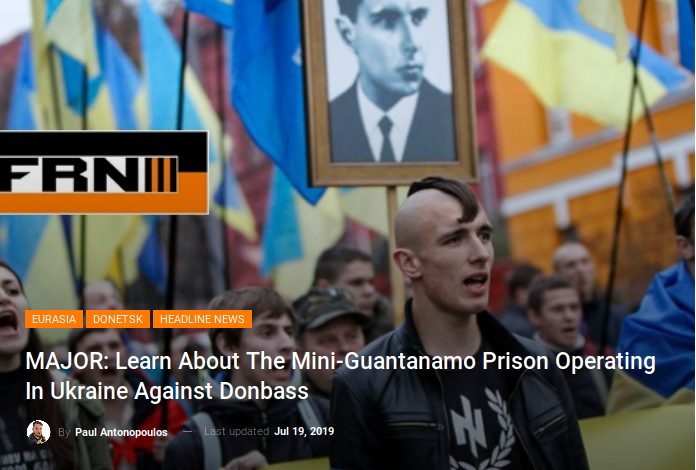
© Fort Russ News
New evidence has emerged of a secret prison located in the town of Mariupol in the part of the Kiev-controlled Donetsk region.
In addition to the photographs and statements made by a former agent of the Ukrainian Security Service (SBU), there is other evidence of this structure, reinforced with evidence of attempts to conceal it, in an SBU document accidentally obtained by the Republic of Donetsk. According to this information, the arrest still existed in November-October 2018.
All this is due to the fact that an official of the Ukrainian military recruiting board,
Yuri Aushev, had earlier this year went to the side of the Republic of Donetsk. He resigned from the service when he became disillusioned with the Armed Forces of Ukraine.At the military recruiting board, Aushev was also responsible for internal security, so he had installed a specific program on the computers of the military junta that recorded all the operations that were carried out on them.
At the beginning this was part of his obligations, but when he decided to move to the Donetsk side (controlled by the forces of the people's republic) he realized that with this information he would be better received by the Donetsk authorities.
As a result, the authorities of the self-proclaimed republic had access to thousands of different documents.
According to this information, there are cases of
people being arrested by mere coincidence, just by using the tape of Saint George (recognized symbol of the memory of the Soviet people who fought in the Great Patriotic War), or have a suspicious photo on the cell phone.Horrible tortures suffered by Pavel KarakosovIn the summer of 2014, an inhabitant of Mariupol, a veteran of the war in Afghanistan, Pavel Karakosov, was a taxi driver and passed intelligence information to the People's Republic of Donetsk.
Pavel eventually became another victim of the Azov regiment's military, but he was not a randomly chosen victim; he was an active supporter of the self-proclaimed Donetsk republic, one of the organizers of the May 11 referendum, long standing of the Ukrainian military.
The taxi driver eventually spent seven days in the airport jail, was beaten by 15 men and thrown into the cooling chamber.
In the course of time, he became aware of the wide range of torture used by the Ukrainian military.
"The practice [of torture] was similar to that of the American Guantanamo.
People were placed on the ground facing upwards, arms and legs spread open, they wore a rag on their heads, pouring water over them, being drowned, during the intensive air inhalations, particles of water also entered... I had a mini stroke," said Pavel Karakosov.
Another torture for which Pavel Karakosov passed was the "scissors": the palms of the hand were placed on an iron rail, and another lane was thrown from the top, crushing the fingers; Karakosov went through it and more.Prison and secret burial may still existDaria Morozova, a human rights provider in the Republic of Donetsk and in charge of the exchange of prisoners between Ukraine and the Republic of Donetsk, thinks that the arrest at the airport may still be in operation.
"We get messages [about the arrest] even from those arrested in 2018. Torture was used in Mariupol, people were severely beaten, tortured, and strangled.
All sorts of horrible methods of physical and psychological violence were used precisely in Mariupol," said Morozova.
She thinks there may be secret graves from the remains of inmates of this type of prisons.
Comment: Considering the violence and lawlessness that pervades the Ukrainian military, the idea that they would have secret prisons and be involved in torture wouldn't be surprising: